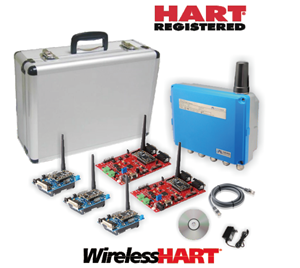Pressure transmitter research and application status
With the continuous improvement of automation level, as well as computer technology, material technology and micro-electromechanical systems (micro- electro- mechanical system, MEMS) technology rapid progress, industrial automation field widely used in the field of intelligent instrumentation in recent years has also been rapid development.
The research on pressure transmitter mainly focuses on the following aspects:
① Pressure transmitter communication methods.
② Pressure sensors in high temperature extreme environments.
③ Pressure transmitter with self-diagnosis function.
④ Pressure transmitter temperature compensation method.
⑤ Pressure transmitter other aspects of the research progress.
Pressure transmitter communication method
In the past, pressure transmitters only support 4-20mA analog standard signals commonly used in the field of industrial process control. With the continuous development of information technology and digital technology, more and more intelligent pressure transmitters supporting digital signal transmission fieldbus protocol can be developed and manufactured.HART intelligent pressure transmitter based on the open communication protocol of highway addressable remote transducer (HART), designed a two-wire pressure transmitter. A two-wire pressure transmitter is designed based on the highway addressable remote transducer (HART) open communication protocol. With only two wires, the pressure transmitter not only transmits digital and analog signals, but also supplies power to the device. Compared with other protocols that only support digital signals, the pressure transmitter's distinctive feature is that it transmits digital signals while retaining the 4-20mA analog current signal, thus playing an important role in the transition period when digital instruments gradually replace traditional analog instruments. However, the HART protocol is a semi-digital communication method, which only supports unidirectional transmission, and the channel is one-to-one. With the development of technology, HART protocol gradually can not meet the field instrumentation and control system information exchange needs.
In the digital and intelligent industry 4.0 era, the digitalization of the industrial production field is of great significance. On the basis of the traditional pressure transmitter, based on the controller area network (CAN) bus approach to the transmitter digital transformation, design and implementation of a small size, high precision, digital pressure measurement module can be embedded in the pressure transmitter, thus significantly improving the efficiency and reliability of the information exchange between the field equipment and the control system. Reliability. A transmitter was designed to measure the pressure of a water network line. The transmitter's output current signal is converged by a remote terminal unit (RTU) and transmitted to the control room using industrial Ethernet for centralized display of parameters. The accuracy of the transmitter reaches 0.14%, and all the components are localized, which has the advantages of independent control, simple use and good reliability.
Wireless communication has received wide attention in the past few years. Industrial wireless communication technology has the advantages of low cost, high efficiency, high reliability, convenient laying, etc., and has been widely used in industrial sites. Especially for signal transmission in flammable and explosive hazardous environments, such as oil and gas, chemical, and tank area scenarios, wireless transmission is an economical and effective means of communication. A wireless pressure measurement system based on capacitive sensors is designed. The system firstly converts the applied pressure into a corresponding voltage signal through capacitive sensors and signal conditioning circuits, and then realizes the wireless transmission and reception of the signal by using frequency shift keying (FSK) transceivers. The system is controlled within 1.6% of full scale error and is suitable for wireless communication has received a lot of attention in the past few years. Industrial wireless communication technology has the advantages of low cost, high efficiency, high reliability and convenient laying, and has been widely used in industrial sites. Especially for signal transmission in flammable and explosive hazardous environments, such as oil and gas, chemical, and tank area scenarios, wireless transmission is an economical and effective means of communication. A wireless pressure measurement system based on capacitive sensors is designed. The system firstly converts the applied pressure into a corresponding voltage signal through capacitive sensors and signal conditioning circuits, and then realizes the wireless transmission and reception of the signal by using frequency shift keying (FSK) transceivers. The system's full-scale error is controlled within 1.6%, which is suitable for highly hazardous flammable and explosive areas and areas where cable installation and maintenance are difficult. In addition, FSK has strong safety, high efficiency and noise immunity. A capacitive pressure transmitter based on MEMS technology is designed. The transmitter compensates for nonlinear errors through an artificial neural network algorithm. Lithium niobate (LiNbO3) is selected as the long range optical communication material for this transmitter. Due to the characteristics of light, this transmission method is virtually lossless and is characterized by high reliability, simple maintenance, and low danger.
With the development of industrial digitalization, the requirements for intelligent sensors are increasing. A wireless intelligent pressure transmitter with real-time fault diagnosis is proposed. The transmitter monitors the analog output of the pressure sensor in real time and runs a self-diagnostic program so that the generated pressure data and diagnostic information can be transmitted to the receiving system through wireless transmission. Aiming at the characteristics of industrial processes such as electromagnetic interference and space complexity, a wireless high-precision pressure transmitter is designed to meet the needs of industrial sites, realizing the industrial wireless network for industrial process automation (wireless network for industrial automation- process atuomation, WIA- PA) standard. WIA- PA) standard for industrial process automation and monocrystalline silicon pressure measurement technology. The wireless high-precision pressure transmitter can effectively improve the informationization and digital management level of industrial field pressure measurement, and has a broad application prospect.





